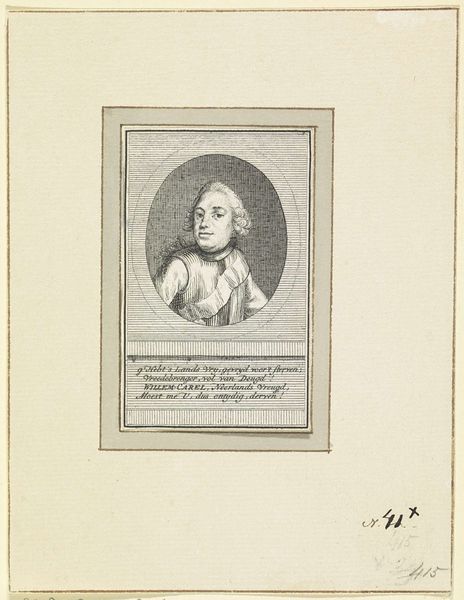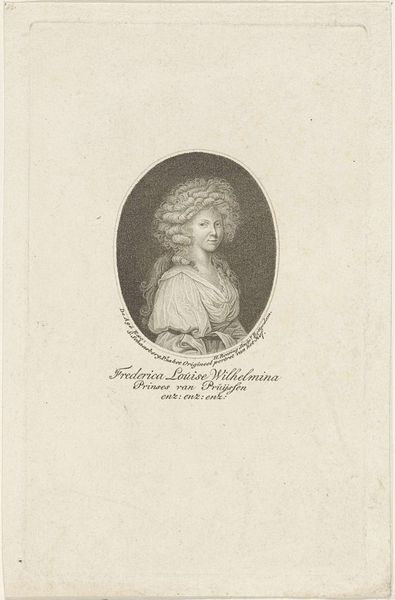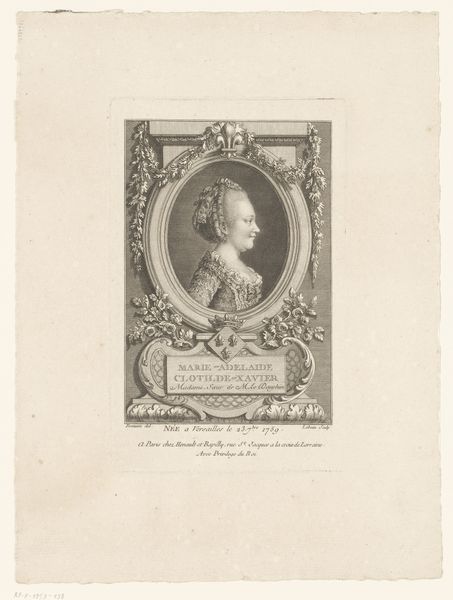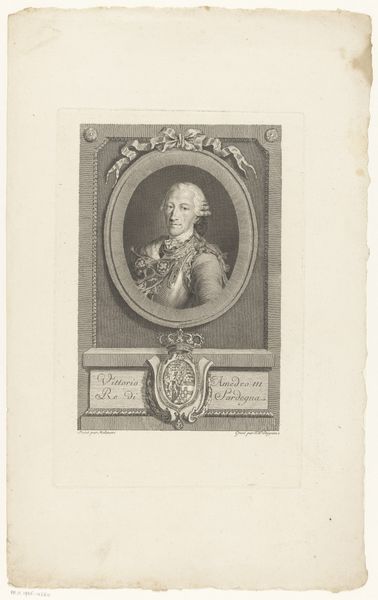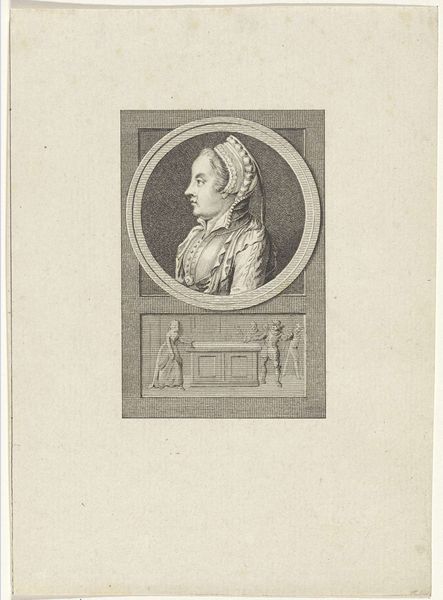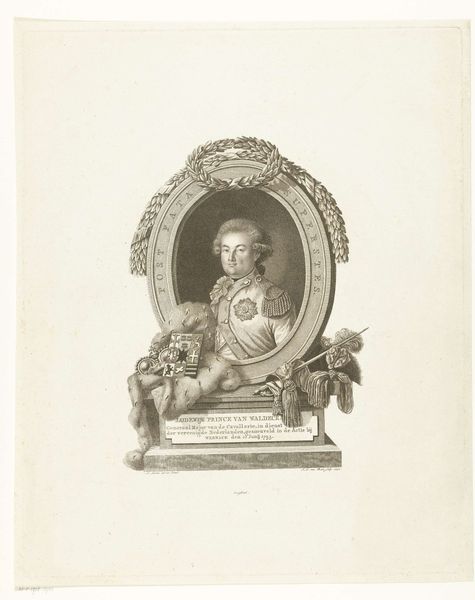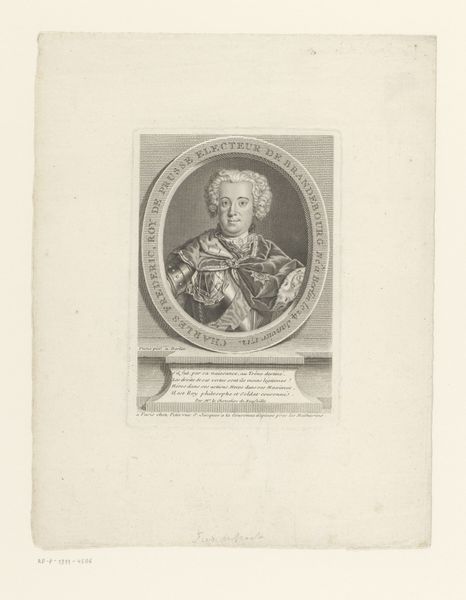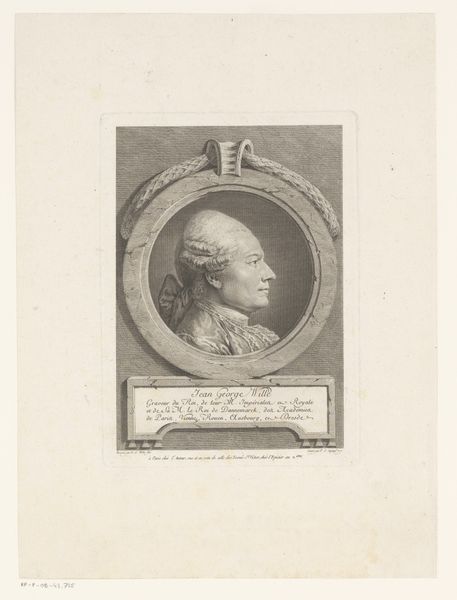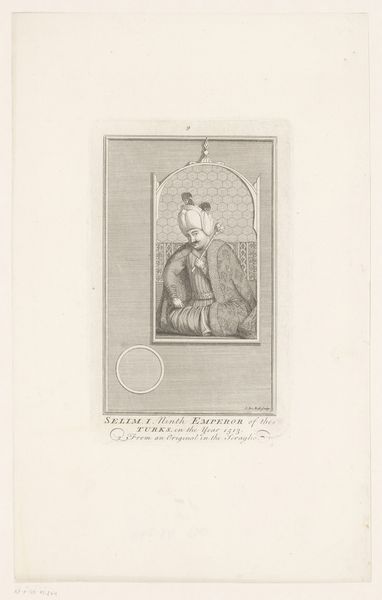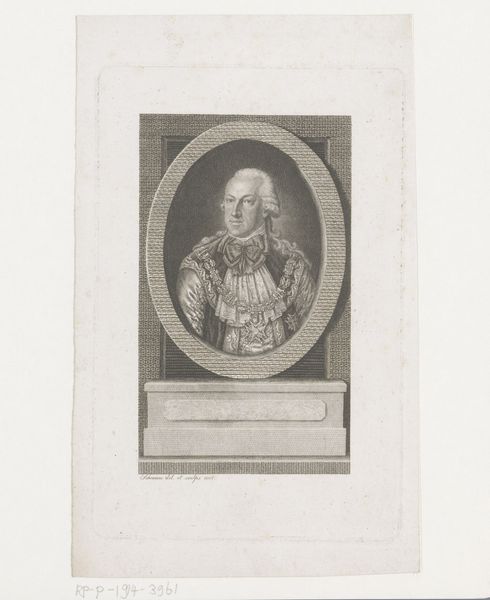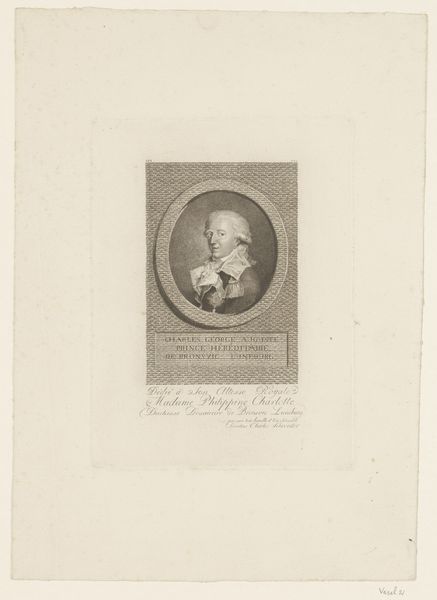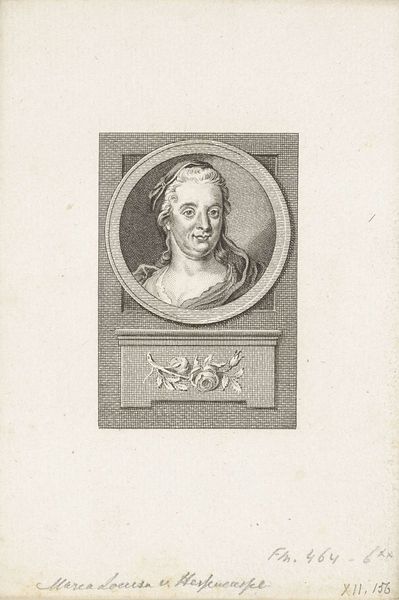
Dimensions: height 79 mm, width 49 mm
Copyright: Rijks Museum: Open Domain
Curator: Here we have an etching from somewhere between 1765 and 1849, presenting a "Portret van Willem V, prins van Oranje-Nassau." Quite a mouthful. Editor: My first thought? Elegantly constrained. The geometric lines that frame this gentleman almost feel like a delicate cage, while that elaborate wig…it's as if even the hair can barely contain its excitement! What’s the mood it inspires for you? Curator: You know, it's got that sort of stiff upper lip quality. Think carefully concealed anxieties bubbling just under the surface. After all, he lived during a tumultuous period – a whole revolutionary era, you might say! And as Prince, I’m sure a good hair day was among his least preoccupations. Editor: Absolutely. Let’s dig a little deeper into that socio-political context, shall we? William V lived through a period marked by enlightenment ideals and growing discontent. The rigid geometric composition perhaps reflects the constraints placed upon rulers like him at the time? And the fact it is Anonymous—what does that say about the power relations at play, where reproducing one's leader is fraught with possible peril or praise? Curator: Indeed. Though anonymous, it seems almost crafted to maintain appearances of strength. Notice the engraving. It's almost photographic, and not a single errant line! And yet the eyes give him away; all of that tension right behind the perfect curls. Editor: And consider that neoclassical influence. The very calculated depiction serves not just as a physical likeness, but an assertion of authority in changing times. And don't those geometric shapes emphasize rationality during an age of Revolution? Curator: Yes, almost pleading to those forces of radical change, saying, "Look at my hair, the clean lines, the absolute control! I beg you, resist!" Editor: Perhaps his perfectly captured appearance acts as both armor and aspiration. He yearns for order while hinting that those times are crumbling under his feet. The revolution was also about class, gender, and representation – how do you think a print like this circulates amongst these issues? Curator: Excellent question. It does raise questions about accessibility, how the image was disseminated, and the extent to which the artist wished it to be circulated. Editor: Indeed! I leave more certain than ever of this print’s enduring capacity to speak through those fine lines. Curator: Well said. The portrait serves, if nothing else, as an intriguing snapshot into a mind at odds with its time.
Comments
No comments
Be the first to comment and join the conversation on the ultimate creative platform.
